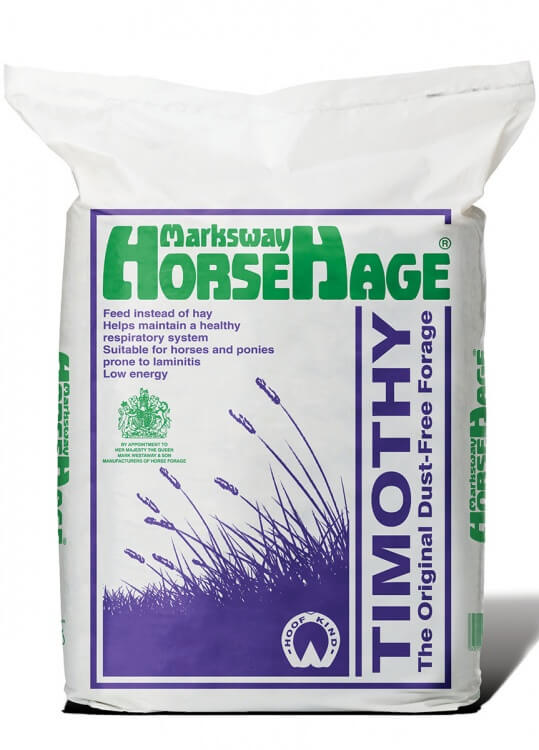
HorseHage Timothy
Timothy HorseHage is produced in the same way as HorseHage Ryegrass and High Fibre, but is made from Timothy grass which has a very different ‘nose’ to ryegrass, and is slightly softer in texture.
Timothy grass is higher in fibre and lower in protein than many other grasses, making Timothy HorseHage particularly suitable for:
- leisure horses and ponies
- native ponies
- veterans
- horses and ponies that are resting, convalescing or prone to laminitis.
HorseHage Timothy has a similar nutrient analysis to High Fibre HorseHage and is highly palatable, making it ideal for fussy feeders or simply to add variety to the diets of those already being fed HorseHage.

Being particularly low in sugar and starch and high in fibre, Timothy HorseHage and also High Fibre HorseHage are suitable for feeding to horses and ponies prone to laminitis. This is indicated by the HoofKind logo on their packaging.
HorseHage Timothy is known by many of our customers as ‘HorseHage Purple’ because of its bag colour.
Appearance and aroma
HorseHage Timothy is usually deep gold in colour and contains the characteristic, cylindrical timothy seedheads. It tends to feel softer in texture than High Fibre HorseHage and has its own timothy smell, compared by some to the smell of tea.
Find a stockist- Nutritional Information
- Composition
Nutritional Information
Typical Nutritional Analysis (on a dry matter basis):
- Protein 8 - 9%
- MAD Fibre* 35 - 37 %
- Calcium 0.4 – 0.6 %
- Energy 8 - 10MJ/kg
- Starch 1 - 2%
- Dry Matter 60%
*MAD Fibre – Modified Acid Detergent Fibre (This is a measure of the digestible part of the total fibre in a feed)
Composition
Timothy grass mix
Frequently Asked Questions
HorseHage Timothy is generally suited to leisure horses and ponies in light to medium work who require a lower calorie diet, as well as those at rest or convalescing.
Yes, Timothy is suitable for horses with laminitis or cushings as it has a lower energy and protein level. The particular fermentation process involved in making HorseHage reduces the amount of naturally occurring sugars in the grass therefore meaning it is considerably lower in sugar than other forages.

